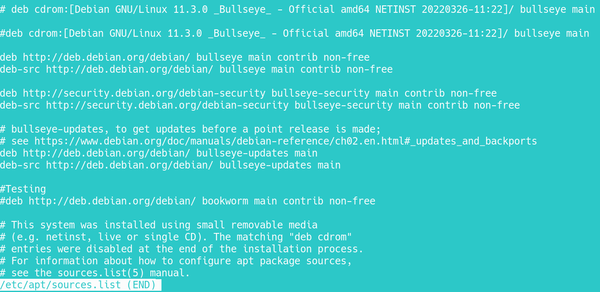Tips for mixing safely
Mixing Debian Repositories

Lead Image © Andrey Kiselev, 123RF.com
A little caution can save you hours of frustrating work (plus, options for mixing gone awry).
Debian package repositories are organized along two axes. The first axis controls the degree of software freedom in the installation. Newly installed, a Debian system includes only packages from the main section of the repository, which contains only free-licensed packages. However, you can enable the contrib section, which houses free packages that depend on non-free packages, and non-free, which houses packages with restrictive licenses, by editing the URLs for repositories in /etc/apt/sources.list (Figure 1). Little harm can come from this editing, and, in fact, it is necessary if you want to use the advanced proprietary hardware drivers. The second axis, though, is another matter. Tinkered with carelessly, it causes more reinstalls than any other aspect of Debian.

This second axis is the main Debian repositories themselves. By default, a Debian system enables only the stable repository. Stay with stable and you enjoy the full support of the distribution, including backports and security updates. But set up the testing and unstable repositories intended primarily for developers, and nothing is guaranteed. A single careless step, and you could lose your desktop environment, the ability to work with packages, or some other basic part of the installation, and find yourself condemned to hours of futile efforts to recover. Too often, a reinstall is the quickest solution.
[...]
Buy Linux Magazine
Subscribe to our Linux Newsletters
Find Linux and Open Source Jobs
Subscribe to our ADMIN Newsletters
Support Our Work
Linux Magazine content is made possible with support from readers like you. Please consider contributing when you’ve found an article to be beneficial.

News
-
AUR Repository Still Under DDoS Attack
Arch User Repository continues to be under a DDoS attack that has been going on for two weeks.
-
RingReaper Malware Poses Danger to Linux Systems
A new kind of malware exploits modern Linux kernels for I/O operations.
-
Happy Birthday, Linux
On August 25, Linux officially turns 34.
-
VirtualBox 7.2 Has Arrived
With early support for Linux kernel 6.17 and other new additions, VirtualBox 7.2 is a must-update for users.
-
Linux Mint 22.2 Beta Available for Testing
Some interesting new additions and improvements are coming to Linux Mint. Check out the Linux Mint 22.2 Beta to give it a test run.
-
Debian 13.0 Officially Released
After two years of development, the latest iteration of Debian is now available with plenty of under-the-hood improvements.
-
Upcoming Changes for MXLinux
MXLinux 25 has plenty in store to please all types of users.
-
A New Linux AI Assistant in Town
Newelle, a Linux AI assistant, works with different LLMs and includes document parsing and profiles.
-
Linux Kernel 6.16 Released with Minor Fixes
The latest Linux kernel doesn't really include any big-ticket features, just a lot of lines of code.
-
EU Sovereign Tech Fund Gains Traction
OpenForum Europe recently released a report regarding a sovereign tech fund with backing from several significant entities.

